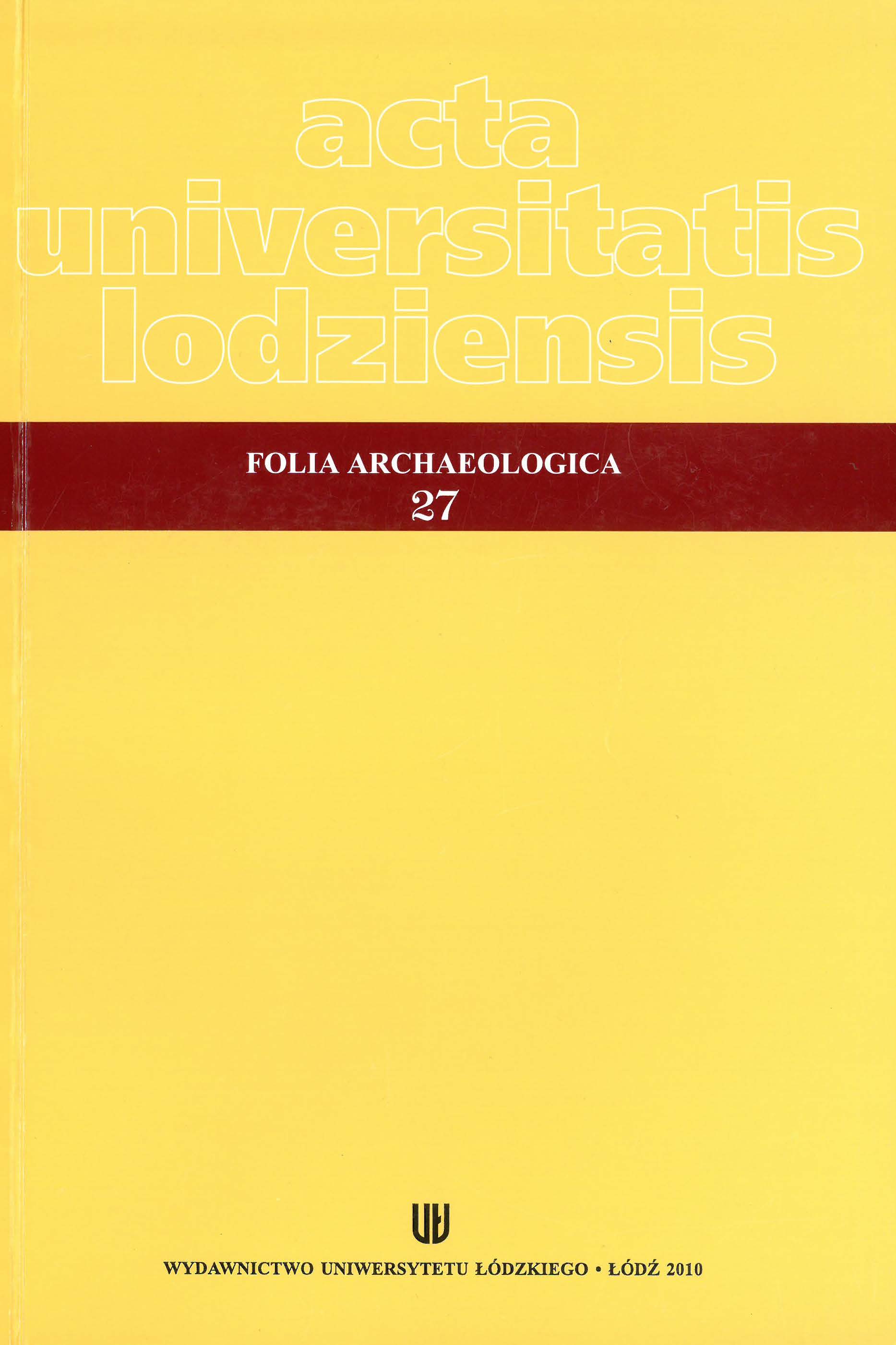Zbiór fragmentów kafli średniowiecznych i nowożytnych z badań zamku w Chęcinach, woj. świętokrzyskie
DOI:
https://doi.org/10.18778/0208-6034.27.02Słowa kluczowe:
zamek w Chęcinach, kafle piecowe z chęcińskiego zamku, motywy zdobnicze, kafle herbowe, ogrzewanie piecowe zamkuAbstrakt
The article is the first attempt at arrangement of attainable for a researcher collection of tiles from a royal castle in Chęciny, first of all in aspect of chronology of individual groups of tile finds, which in case of Chęciny may be reconstructed only on the grounds of stylistic and technological analyses. The collection of tile fragments from archaeological excavations of the castle in comparison with other objects of this type in Poland is very not numerous (hardly 185 fragments). With the period of the late Middle Ages fragments of barely one tile may be connected, whereas coming from mature in respect of workshop producer; it must – as pars pro toto – illustrate aesthetic aspect of the castle in the 15th century and the beginnings of the next century when the king’s court sometimes stayed here, especially in times of Vladislav Jagiello.
A little more fragments may be connected with mature 16th century. Among them there are enigmatic plates of kaolinite clay, hypothetically defined as fragments of stove surmounting. Representations of animals on two of these plates still stylistically belong to the Gothic; they were surely made with the use of matrixes, with which face plates of “classical” tiles were stamped.
The biggest collection of tile fragments comes from the 1st half of the 17th century, concretely from the period since 1607 (destruction of the Gothic castle and beginnings of its rebuilding in the late Renaissance style) to 1655 (rst destructions in times of the Swedish war). Most important seems to be recovery of several fragments of tiles covered with glazes of navy blue and white – navy blue. At least one of them must have come from a stove described in lustration from 1613 as “blue stove”. It stood in the court room (“the great room”) of the lordly house. Likewise in cases of other stoves of the “Vasa” horizon, the stove from Chęciny should be connected with the period of Sigismund III reign.
Other fragments of tiles coming from hitherto archaeological excavations of the castle of Chęciny are difficult to assign to specific stoves known from written sources, although the collected material may be generally divided into stages connected with certain works conducted on the castle within the 16th and the 1st quarter of the 17th century.
The present text should be treated as the first contribution to attempts at reconstruction of heating system of the upper castle and heating of rooms situated in the lower part. Archaeological research will be here of great importance, but also reading again – in context of the reported subject – written sources, in which hitherto unused possibilities still remain.
Pobrania
Pobrania
Opublikowane
Jak cytować
Numer
Dział
Licencja

Utwór dostępny jest na licencji Creative Commons Uznanie autorstwa – Użycie niekomercyjne – Bez utworów zależnych 4.0 Międzynarodowe.












